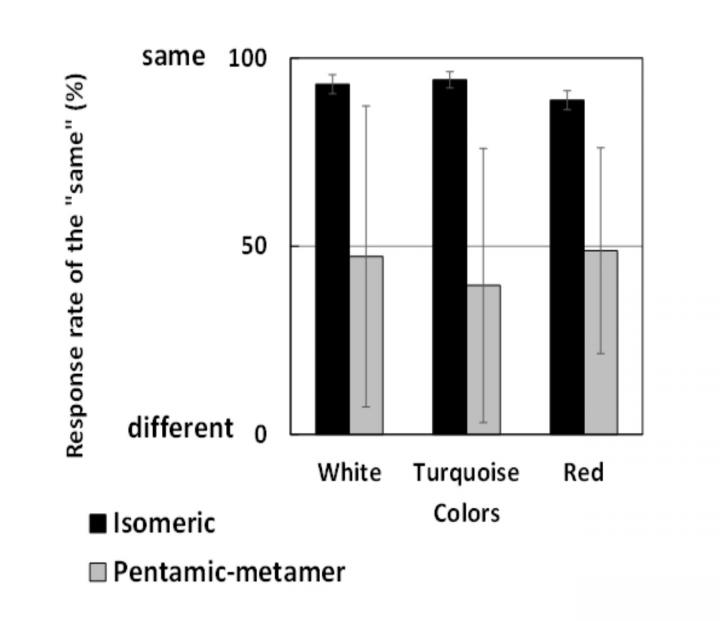
Credit: Yokohama National University
The white of paper and the white of monitor can be precisely the same color values, yet they appear fundamentally different. That disparity may not lie in the mode of display, but rather how the colors are constructed, according to a research team at Yokohama National University in Japan.
They published their findings on October 27 in Scientific Reports, a Nature Research journal.
“We experimentally showed that the reason why color appearance between surface color and self-luminous color cannot be matched is the difference of spectral distributions, not the difference of devices,” said paper author Katsunori Okajima, professor in the Faculty of Environment and Information Sciences at Yokohama National University.
Surface colors are those that humans see by light bouncing off a solid media, such as paper, wood or fabric. Self-luminous colors are seen via a light that emits directly from the color itself, such as those displayed on computer monitors or phone screens.
“Theoretically, the color appearance of lights that have equal colorimetric values should match regardless of their spectral distributions,” Okajima said. “However, the color appearances of objects with the same colorimetric values on a monitor and a paper are mostly mismatched, even under conditions where not only the tristimulus values of the targets but also those of the surrounding environment and observation environment are identical.”
Tristimulus values are standardized assessments of red, green and blue that account for color as well as how humans visually perceive the color. According to Okajima, previous studies in the field of color science have not been able to solve the underlying problem of mismatch between cross-media because they have not rigorously examined the physical effects of color perception.
“In other words, the physical and psychological factors cannot be made independent, and as a fundamental problem, it cannot be denied that the difference in physical luminescence also affects the color appearance,” Okajima said. “Therefore, we need to determine whether we can match the color appearance when we compare isomeric color-matching conditions that have the same spectral distributions between cross-media. Such an isomeric condition has one more advantage in that we do not have to consider the individual difference between observers.”
To achieve isomeric, or identical, color-matching conditions, the researchers designed an experiment that allowed participants to view surface and self-luminous colors with exactly the same spectral distributions. The researchers also prepared conditions in which the color values matched identically, but not the spectral distribution of light.
The researchers found that the 12 out of 13 participants could not match the color appearances under metameric conditions, yet they were able to match colors more than 90% of the time under identical spectral distributions. One outlier participant had high matches in both categories, leading the researches to guess that person may be a standard observer, meaning they can naturally precisely perceive colors.
“These results show the difference in the physical mechanism does not affect the color appearance problem,” Okajima said. “They further suggest the differences in spectral distributions cause mismatch of color appearance in cross-media color reproduction. If the spectral distributions are matched, color matching is possible in any color appearance mode.”
The researchers will next work to clarify how the cells in the eye that send light to the brain may affect color appearance.
“Our results are significant not only for color science, but also for industry, and lead to the importance of multispectral displays for recreating color images precisely,” Okajima said.
###
This work was supported by the Japan Society for the Promotion of Science (Grant Numbers: JP15H05926, JP18H04111, and JP19J15530).
This paper was co-authored by Akari Kagimoto of the Graduate School of Environment and Information Sciences at Yokohama National University, who is also a JSPS Research Fellowship for Young Scientist.
Yokohama National University (YNU or Yokokoku) is a Japanese national university founded in 1949. YNU provides students with a practical education utilizing the wide expertise of its faculty and facilitates engagement with the global community. YNU’s strength in the academic research of practical application sciences leads to high-impact publications and contributes to international scientific research and the global society. For more information, please see: https:/
Media Contact
Akiko Tsumura
[email protected]
Related Journal Article
http://dx.




